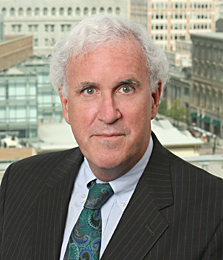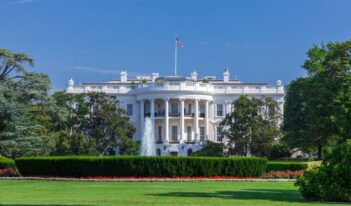
Understanding that policy-making is ultimately idea-driven leads to solutions for regulatory problems.
I want to describe for you what it is like to be a regulatory practitioner. I understand that some of you are not law students or lawyers, so I will describe the regulatory process broadly both for those who are lawyers and those who are humans.
At the outset, I think about the regulatory process from three broad perspectives that have ramifications for anyone working as a regulatory practitioner.
First, the United States government is the most complicated social organism ever developed by human beings. The job of regulatory practitioners is to study how this organism functions and work with it to try to reach intelligent policy decisions.
Second, I think of the regulatory practice as the Queen of the Social Sciences. It is the discipline that gets to put all the other social sciences to work, and is the discipline that draws most heavily on all the areas you have studied and loved in school. Society regulates many complicated phenomena—the air we breathe, how financial institutions operate, what stem cell lines can be used in medical research. To do the job well, a regulatory practitioner has to be proficient in all the social sciences: law, economics, political science, sociology, psychology, journalism and media; and has to be able to learn something about the physical sciences, especially chemistry and physics, to develop persuasive arguments. The job of the regulatory practitioner is to take the insights from these other disciplines and figure out how to develop the best arguments and explain the matter to both experts and laymen alike.
Third, the regulatory practice is the field where law, policy, politics, and media/public relations come crashing together. I say “crashing together” because the outcome of the process is about power and money, and the people in the process are well-educated, highly experienced, and fight very hard for their positions. In order to be effective, the regulatory practitioner has to master each of these disciplines. You also have to be able to work effectively in many different forums—with the agencies, in the courts, before Congress, and with the media—and you have to understand how to translate your core arguments so that they work within the different cultures and attention spans of these institutions.
In addition to these broad observations, in personal terms there are two other aspects of the regulatory practice that are important to understand. First, the job of a regulatory practitioner is enormous fun. How many other jobs pay you to read the newspaper first thing in the morning and react to what you learn? Doing just that is a key part of the profession.
Second, the job presents constant intellectual challenges. Beyond developing the skills to master diverse subject matters, the most important factor you learn is that people locked in policy battles generally have good reasons for their positions, based on their perspectives. The Washington truism often used to describe this phenomenon is, “Where you stand depends upon where you sit.” To be effective, the regulatory practitioner must be able to figure out what part of another person’s position reflects a legitimate policy view and determine if it can be accommodated, and how best to do so.
I learned this lesson while working on the spotted owl controversy, which presented the question whether harvesting of first growth forests in the Pacific Northwest should be prohibited under the Endangered Species Act to protect this bird population. The focus of the debate was on spotted owls, not because they had previously been considered a bellwether indicating the health of the forest ecosystem, but because they could be counted. A lonely forestry graduate student doing his fieldwork had learned how to hoot so that spotted owls would come to his campsite. The Forest Service later generalized the phenomenon by creating a separate job category for hooters who were hired to call the birds. Since they could be counted, the birds served as a proxy for what was happening to the forest.
As a resident of an Eastern city, the original proposal that greatly restricted logging seemed like a reasonable, if indirect, way to protect a valuable natural resource through the fortuitous presence of an endangered bird. I soon learned that the forest had a different meaning for families in Oregon who had decided 50 years ago to preserve a stand of trees for harvesting so that they could finance their grandchildren’s college education.
Once these competing perspectives were understood, progress could be made toward a resolution.
This is the second of a three-part series drawing on Mr. Cooney’s remarks as the inaugural keynote speaker at the Penn Program on Regulation’s February, 2012, regulation dinner at the University of Pennsylvania Law School. Tomorrow’s post: “The Regulatory Practitioner (Part III): What is it Like to Be a Regulatory Practitioner.”




